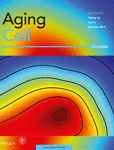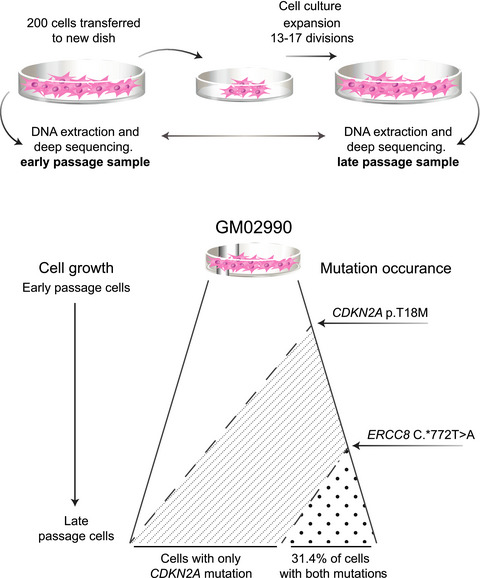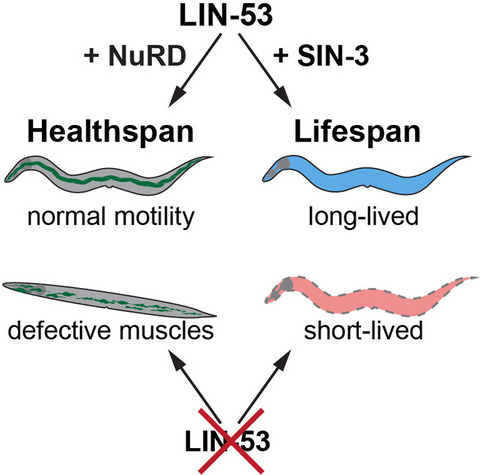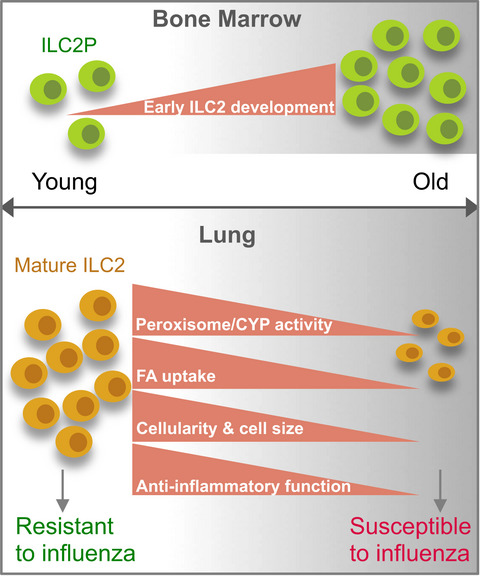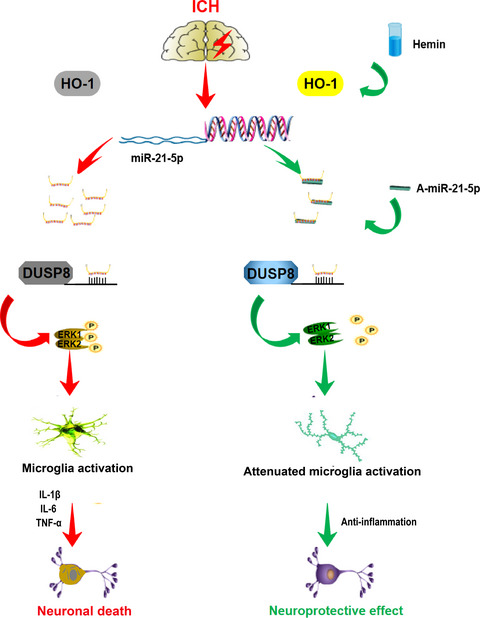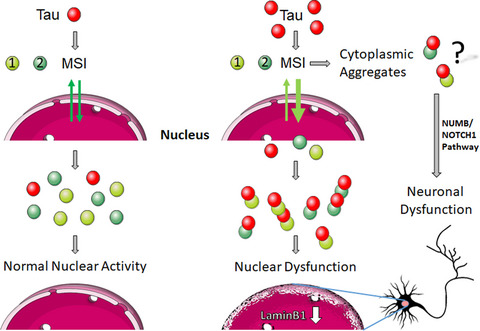Journal list menu
Export Citations
Download PDFs
ISSUE INFORMATION
REVIEWS
Oxidative stress in the aging substantia nigra and the etiology of Parkinson's disease
- First Published: 20 August 2019
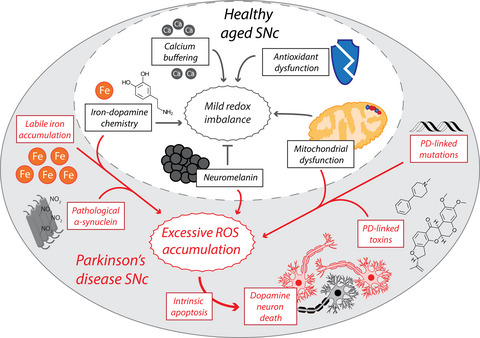
Dopamine neurons within the healthy human substantia nigra exhibit mild oxidative stress during aging, resulting from their unique biochemical properties and a number of age-dependent biochemical changes specific to this neuronal population (grey). An exacerbation of these pathways, combined with additional environmental toxins and genetic mutations, worsens redox balance within nigral dopamine neurons in Parkinson's disease, causing excessive oxidative stress and dopamine neuron death (red).
Methionine metabolism and methyltransferases in the regulation of aging and lifespan extension across species
- First Published: 28 August 2019
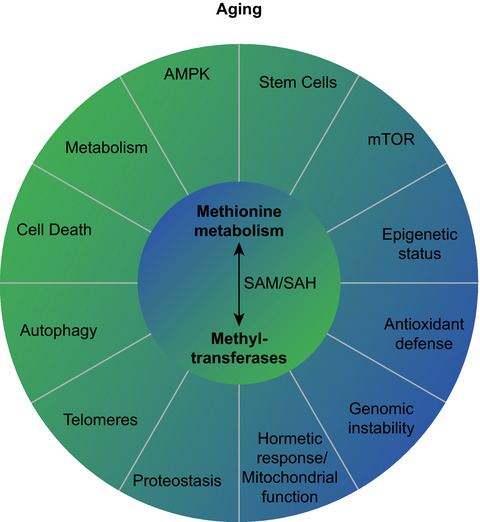
A potential mechanism linking the activity of methionine metabolism and lifespan is regulation of production of the methyl donor S-adenosylmethionine (SAM), which, after transferring its methyl group, is converted to S-adenosylhomocysteine (SAH). Methionine metabolism determines the ratio of SAM/SAH metabolites and affects most of the methylation reactions in the cell, which in turn regulate a wide range of processes including ones that were attributed to be responsible for the lifespan extension by MetR.
The role of lipid metabolism in aging, lifespan regulation, and age-related disease
- First Published: 27 September 2019
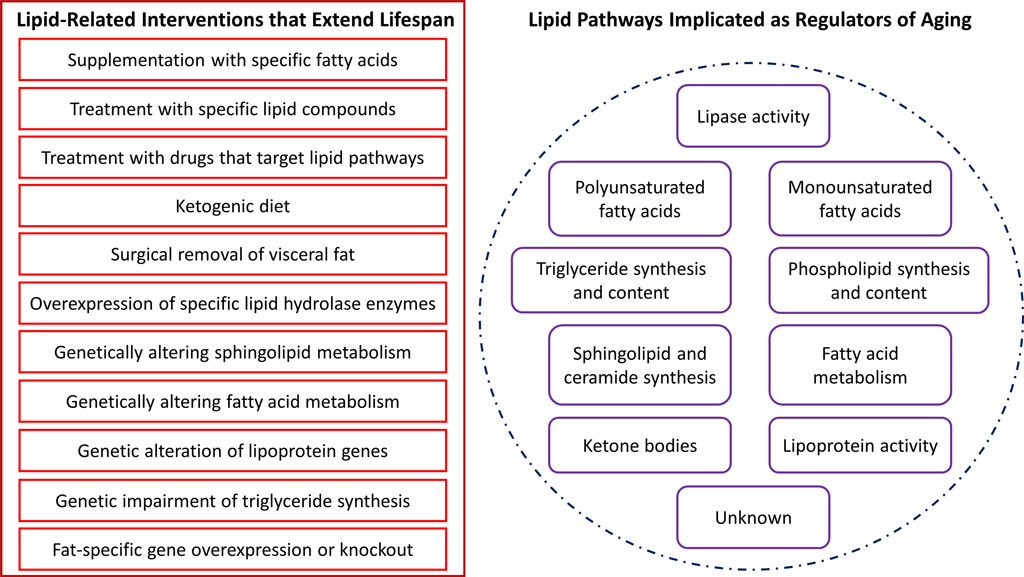
A growing body of evidence suggests that lipid metabolism regulates aging. Various dietary, pharmacological, surgical, and genetic lipid-related interventions have been shown to extend lifespan in model organisms. These lifespan studies have implicated several specific lipid pathways as regulators of aging and health. Current data suggest that lipid-specific interventions have the potential to extend human healthspan. Moreover, blood-based lipids represent a promising source of aging biomarkers.
ORIGINAL PAPER
Late-onset retinal degeneration pathology due to mutations in CTRP5 is mediated through HTRA1
- First Published: 05 August 2019
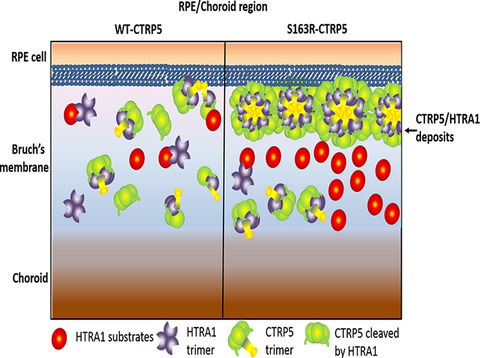
The S163R mutation in C1q-tumor necrosis factor-5 protein (S163R-CTRP5) results in accumulation of drusen-like deposits containing HTRA1 serine protease and CTRP5 in the Bruch's membrane/choroid (BM-Ch) which lead to L-ORD in patients. Both WT and S163R-CTRP5 bind HTRA1. While WT-CTRP5 stimulates the HTRA1 protease activity and serves as its substrate, S163R-CTRP5 is resistant to HTRA1-mediated cleavage. Accumulation of HTRA1 and cleavage-resistant S163R-CTRP5 may result in the formation of pathological deposits rich in these two proteins in BM-Ch.
ORIGINAL ARTICLES
Aging-related carcinoembryonic antigen-related cell adhesion molecule 1 signaling promotes vascular dysfunction
- First Published: 06 August 2019
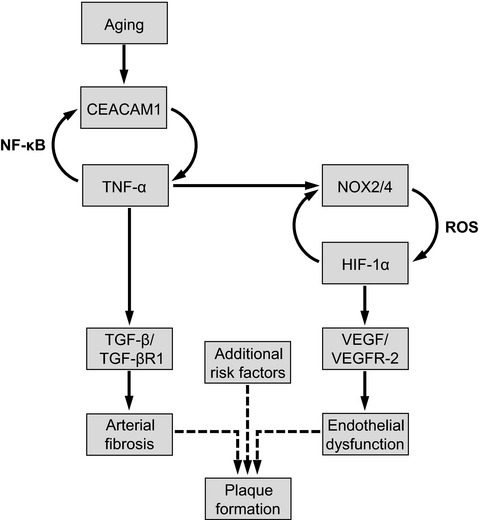
Carcinoembryonic antigen-related cell adhesion molecule 1 (CEACAM1) is a central mediator of vascular aging. Age-dependently upregulated CEACAM1 promotes vascular fibrosis and endothelial dysfunction via increased TGF-β/TGF-βR1 and VEGF/VEGFR-2 signaling, respectively. In the presence of additional risk factors, these age-dependent vascular alterations may transform into the development of vascular disorders, that is, atherosclerosis.
Analysis of somatic mutations identifies signs of selection during in vitro aging of primary dermal fibroblasts
- First Published: 05 August 2019
The conserved histone chaperone LIN-53 is required for normal lifespan and maintenance of muscle integrity in Caenorhabditis elegans
- First Published: 09 August 2019
ORIGINAL PAPER
Senescence-associated tissue microenvironment promotes colon cancer formation through the secretory factor GDF15
- First Published: 06 August 2019
ORIGINAL ARTICLES
Telomere length and aging-related outcomes in humans: A Mendelian randomization study in 261,000 older participants
- First Published: 24 August 2019
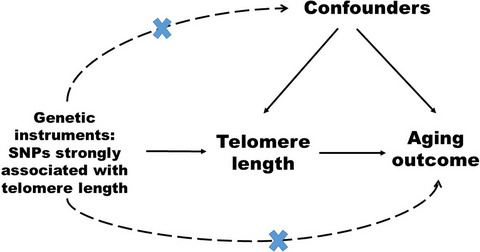
We estimated associations between measured telomere length (TL) and several aging outcomes by using TL-associated inherited genetic variants, which are robust to later environmental exposures (confounders)(top X). Genetically determined TL was associated with increased risks of cancers and reduced risks of cardiovascular disease, but little change in other studied age-related health outcomes. There was genetic evidence consistent with these findings being caused through telomere length itself, rather than through another (unknown) pathway (bottom X).
A serum protein signature of APOE genotypes in centenarians
- First Published: 05 August 2019

This work correlates a large set of serum proteins with carriers of APOE e2 allele from a study of human longevity that includes centenarians and their offspring. The analysis discovers a reproducible signature of 16 serum proteins in cis and trans with APOE alleles. Expression profiles of genes in the signature in brains distinguish late-onset Alzheimer's disease (LOAD) patients from healthy controls. Some of these proteins correlate with patterns of cognitive function and could be new therapeutic targets of neuroprotection.
Mitochondrial DNA somatic mutation burden and heteroplasmy are associated with chronological age, smoking, and HIV infection
- First Published: 13 August 2019
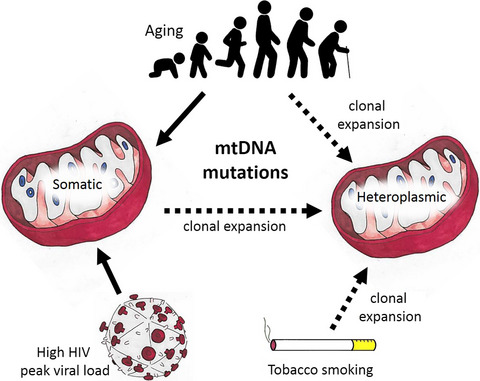
Somatic mtDNA substitutions were increased among older individuals and among HIV+ individuals with a peak viral load > 100,000 copies/μl. Both tobacco smoking and aging were associated with mtDNA substitution heteroplasmy, likely via the clonal expansion of preexisting mutations. Of note, smoking was not associated with somatic (de novo) mutations or mutations considered to be characteristic of oxidative damage.
Compartmentalized effects of aging on group 2 innate lymphoid cell development and function
- First Published: 20 August 2019
Age attenuates the transcriptional changes that occur with sleep in the medial prefrontal cortex
- First Published: 24 September 2019
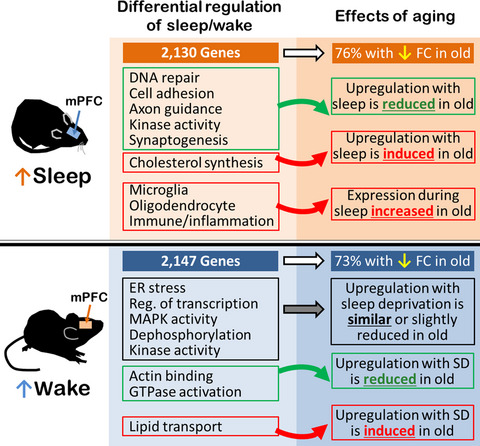
Old mice showed a 30% reduction in the number of genes significantly altered between sleep/wake, and 73%–76% genes had smaller magnitudes of changes compared to young. Gene ontology analysis revealed differential age effects on select pathways. Comparing expressions between young and old during sleep, immune/inflammation and cell-specific markers of microglia and oligodendrocytes were upregulated with age.
MiR-21-5p/dual-specificity phosphatase 8 signalling mediates the anti-inflammatory effect of haem oxygenase-1 in aged intracerebral haemorrhage rats
- First Published: 10 August 2019
Single xenotransplant of rat brown adipose tissue prolonged the ovarian lifespan of aging mice by improving follicle survival
- First Published: 06 August 2019
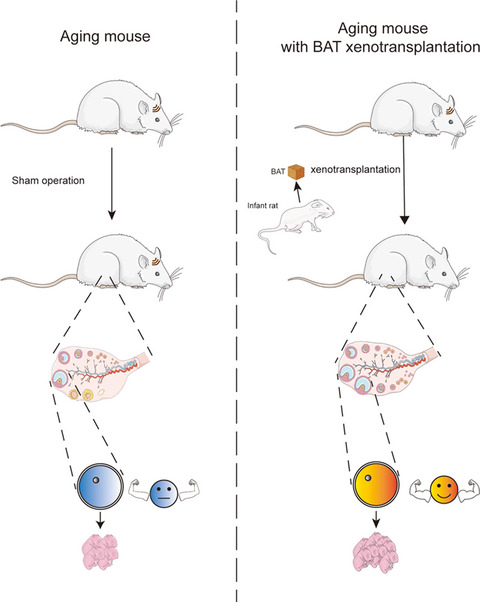
-
Prolonging ovarian lifespan is attracting and challenging. Herein, we found that one-time rat-to-mouse BAT xenotransplantation did not cause serious global rejection reaction, while significantly prolonged the ovarian lifespan and improved the overall health condition of aging mice. Mechanical studies revealed that the number of antral follicles, which will conduce to live birth, increased onefold through a combined improvement at epigenetic, transcriptional, and protein level.
Long-term repopulation of aged bone marrow stem cells using young Sca-1 cells promotes aged heart rejuvenation
- First Published: 05 August 2019
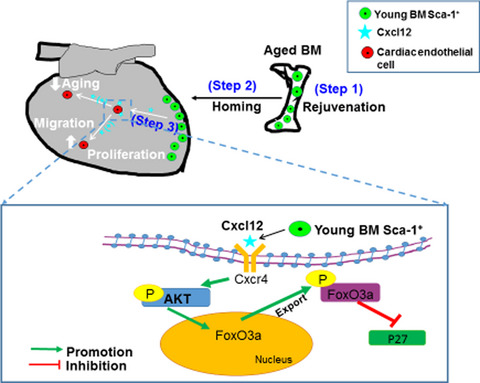
Reconstitution of aged bone marrow with young Sca-1+ cells results in effective homing of functional stem cells and rejuvenation of the aged heart. Host cardiac endothelial cells are the primary cell type rejuvenated by young Sca-1+ cells with improved angiogenic abilities. Cxcl12 is a key modulator of the interaction between homed Sca-1+ cells and the Cxcr4 receptor in host cardiac endothelial cells which leads to the activation of the senescence-suppressing pathway AKT-FoxO3a-P27.
Reversal of epigenetic aging and immunosenescent trends in humans
- First Published: 08 September 2019
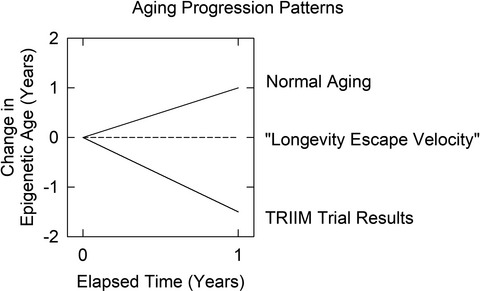
Epigenetic aging—an accurate measure of biological aging in humans—can run in reverse. A thymus regeneration protocol has enabled estimated biological age to decrease in healthy 51- to 65-year-old men by 1.5 years after 1 year of treatment (or by 2.5 years compared to chronological age). This significantly exceeds the heretofore theoretical concept of “longevity escape velocity,” wherein biological age is reduced by 1 year for every 1 year of chronological age.
Targeting amphiregulin (AREG) derived from senescent stromal cells diminishes cancer resistance and averts programmed cell death 1 ligand (PD-L1)-mediated immunosuppression
- First Published: 07 September 2019
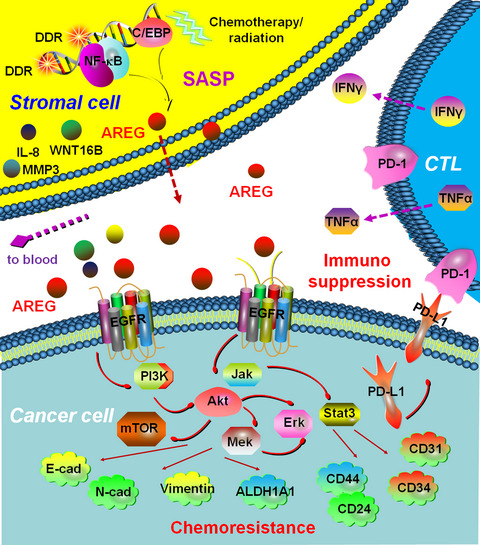
The senescence-associated secretory phenotype (SASP) comprises numerous soluble factors including AREG. Intensively produced by treatment-damaged stroma, AREG drives cancer-acquired resistance and induces passive formation of an immunosuppressive niche. Experimentally detectable in the circulating blood, AREG is both a stroma-derived SASP factor meriting therapeutic intervention and a novel noninvasive biomarker to predict adverse outcome of post-treatment cancer patients in clinical medicine.
Voluntary exercise normalizes the proteomic landscape in muscle and brain and improves the phenotype of progeroid mice
- First Published: 06 September 2019
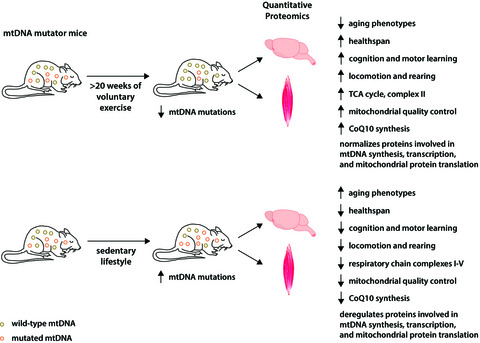
Voluntary exercise of progeroid mtDNA mutator mice counteracted aging phenotypes and improved health and behaviors. Exercise decreased mtDNA mutation load without changing mtDNA copy numbers. Proteomics in striatum, motor cortex, and gastrocnemius revealed tissue specificity to mitochondrial dysfunction. Exercise normalized 50% of the dysregulated proteins, acting on mitochondrial quality control, mtDNA synthesis, transcription, protein translation, CoQ10 synthesis, TCA cycle, and complex II.
Loss of HDAC3 contributes to meiotic defects in aged oocytes
- First Published: 09 September 2019
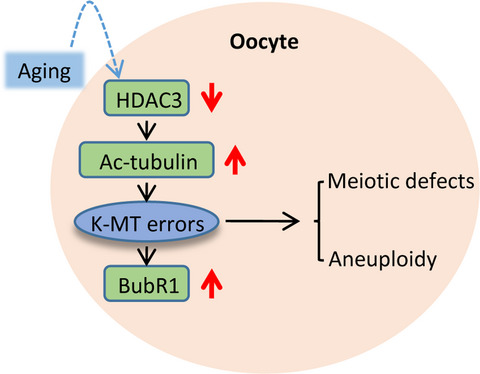
Our data identified HDAC3 as a critical factor determining oocyte quality, and we conclude that advanced maternal age induces the loss of HDAC3 in oocytes, which in turn, results in the hyperacetylation of tubulin and kinetochore-microtubule mis-attachments, thereby contributing to the meiotic defects and aneuploidy generation.
Skewed macrophage polarization in aging skeletal muscle
- First Published: 02 September 2019
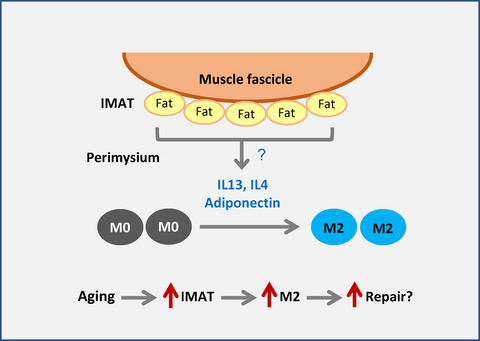
With advancing age, M2 macrophages were found to accumulate in skeletal muscle, particularly in the vicinity of intermuscular adipose tissue (IMAT). In addition, IMAT and regenerating muscle fibers increased with age. Given that IMAT secretes M2-skewing cytokines IL13 and IL4, we propose a connection between M2 polarization and IMAT and suggest that the rise in M2 macrophages may be an adaptive response to repair aged skeletal muscle.
Improved mitochondrial stress response in long-lived Snell dwarf mice
- First Published: 18 August 2019
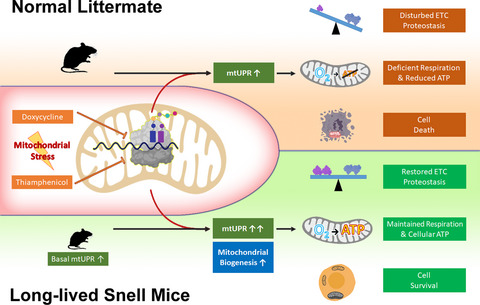
Primary fibroblasts from long-lived Snell mice show elevated levels of the mitochondrial chaperone HSP60 and mitochondrial protease LONP1, two components of the mtUPR, which are further upregulated in response to mitochondrial stress. Snell cells maintain oxidative respiration, ATP content, and mtDNA-encoded gene expression despite mitochondrial stress exposure. In vivo, Snell mice show stronger hepatic mtUPR induction and maintain mitochondrial protein stoichiometry after 2-week doxycycline treatment.
Facilitation of glutamate, but not GABA, release in Familial Alzheimer's APP mutant Knock-in rats with increased β-cleavage of APP
- First Published: 09 September 2019
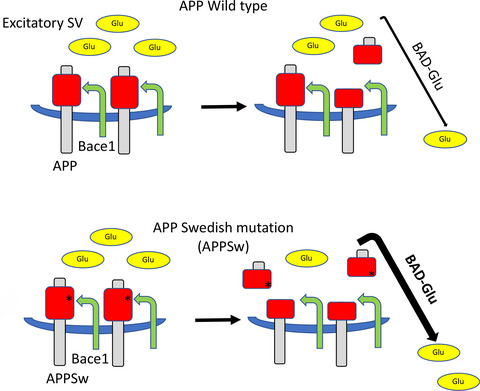
Cleavage of APP by BACE1 facilitates glutamate release. In this model, APP would work as a fine-tuning unit of glutamate (but not GABA) release with BACE1 representing the rheostat. Conditions that augment BACE1 cleavage of APP, such the pathogenic APP Swedish mutation, favor excitation over inhibition, neuronal hyperexcitability, and a pro-epileptogenic condition. Of note, unprovoked seizures occur in AD patients at rates 8- to 10-fold higher than in the general population rates in FAD cases.
Tau oligomers mediate aggregation of RNA-binding proteins Musashi1 and Musashi2 inducing Lamin alteration
- First Published: 18 September 2019
ORIGINAL PAPER
Neuronal p38α mediates age-associated neural stem cell exhaustion and cognitive decline
- First Published: 27 September 2019
ORIGINAL ARTICLE
Metformin blunts muscle hypertrophy in response to progressive resistance exercise training in older adults: A randomized, double-blind, placebo-controlled, multicenter trial: The MASTERS trial
- First Published: 26 September 2019
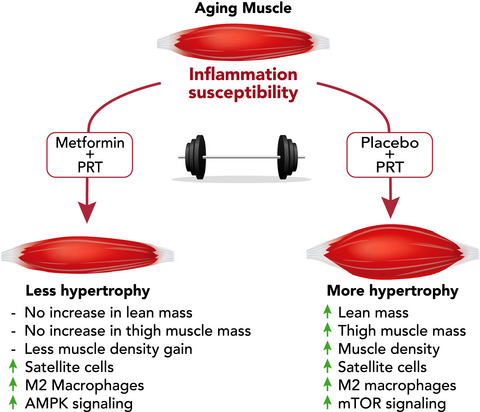
Because metformin reduces inflammation, we hypothesized that it would augment the muscle response to progressive resistance exercise training (PRT) in healthy older participants. Following 14 weeks of PRT, metformin blunted gains in lean mass, thigh muscle mass, and thigh muscle density compared to placebo. Metformin did not affect increases in muscle macrophage abundance. However, metformin increased AMPK signaling, leading to a reduced mean increase in mTOR signaling.
ORIGINAL PAPER
Lifelong choline supplementation ameliorates Alzheimer’s disease pathology and associated cognitive deficits by attenuating microglia activation
- First Published: 27 September 2019
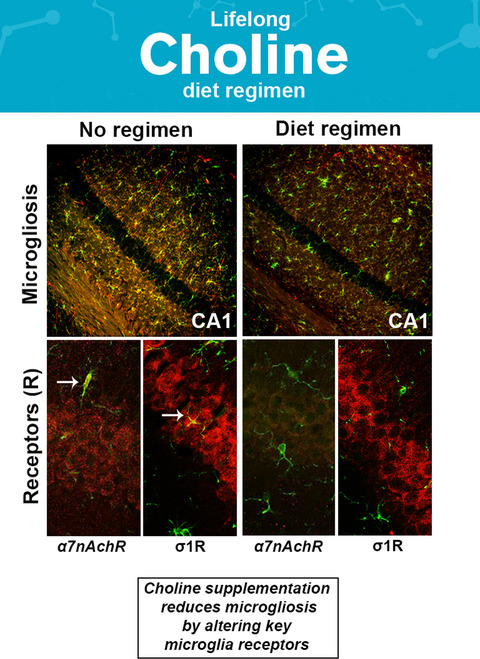
Lifelong choline supplementation significantly reduces amyloid-β load and improves spatial reference memory in female APP/PS1 mice. Mechanistically, these changes are linked to a reduction in disease-associated microgliosis, and a down-regulation of the alpha7 nicotinic acetylcholine (α7nAch) and Sigma-1 (σ1) receptors (R). Our results demonstrate that lifelong choline supplementation produces profound benefits and suggest that simply modifying diet throughout life may reduce AD pathology.
ORIGINAL ARTICLES
Early-life exposure to high-fat diet influences brain health in aging mice
- First Published: 27 September 2019
Demethylation and derepression of genomic retroelements in the skeletal muscles of aged mice
- First Published: 27 September 2019
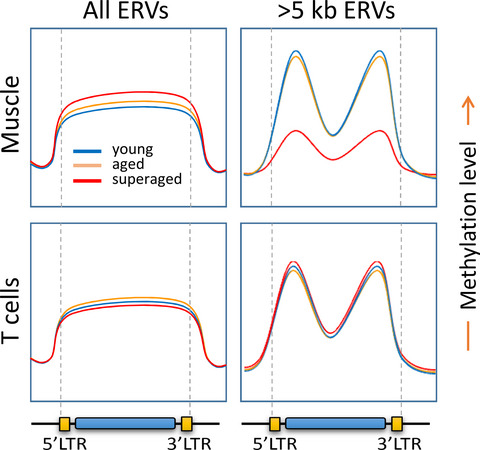
While the majority of the retroelements showed a slight increase in DNA methylation, the larger copies (>5 kb) displayed evident demethylation in skeletal muscles of superaged mice. These global, age-related methylation changes can be considered to be one of the epigenomic characteristics of skeletal muscle aging.
Gene expression modulation by the linker of nucleoskeleton and cytoskeleton complex contributes to proteostasis
- First Published: 01 October 2019
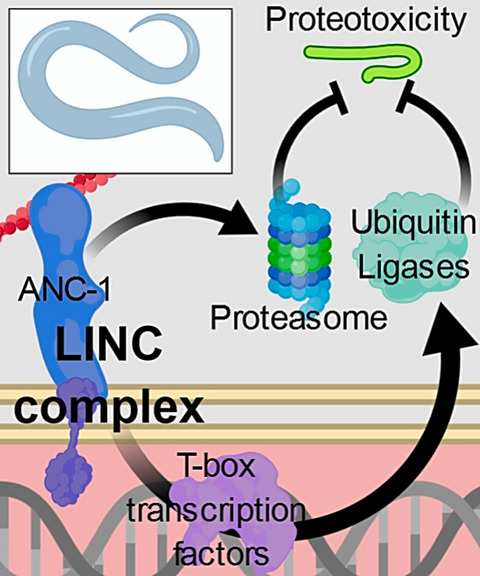
The link between the nucleoskeleton and cytoskeleton protects from toxic aggregative proteins that lead to the development of aging-related neurodegenerative diseases. A mediator of this interaction, ANC-1, promotes the hyper-aggregation of toxic aggregative proteins and modulates the expression of an array of genes and the activity of signaling pathways. ANC-1 regulates proteasome activity and a network of T-box transcription factors, which control the expression of E3 ubiquitination ligases.
SHORT TAKE
A human tissue-specific transcriptomic analysis reveals a complex relationship between aging, cancer, and cellular senescence
- First Published: 27 September 2019
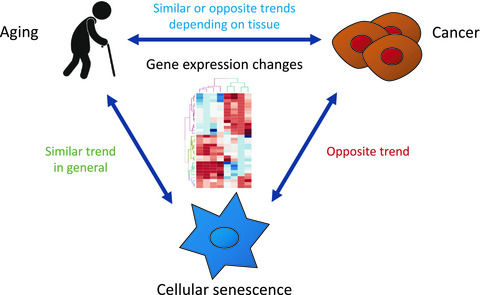
Tissue-specific RNA-seq analysis shows an overall opposite direction of gene expression changes in ageing and cancer, with a few tissues as exceptions. Cellular senescence signatures display similar changes to the ageing transcriptome, but strongly exhibit opposite changes to cancer gene expression patterns.




